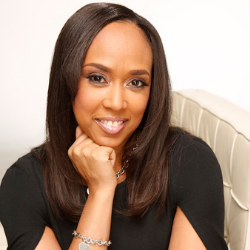
 By Dr. Cherry Collier
By Dr. Cherry Collier
DEI&B Expert and TLG Strategic Partner
What does inclusive leadership look like?
First, when you are thinking about true inclusion, you must accept and meet people where they are. What that means is, America by nature, is an individualistic society. To think we won’t be individualistic is unfair and unfortunate. We are a collectivist culture, and there is value to both cultures if you are thinking about the Hofstede’s cultural dimensions theory. I don’t think it’s about moving from individualism so much as celebrating the uniqueness that exists for whoever you are. We must start to understand and value that we don’t have to be exactly alike to be who we need to be.
For example, many of us used to see people who had hair that was a non-traditional color, and we would look at them very differently than we do today. Today, we see all types of people with different hairstyles and colors, and that is more mainstream. That’s their way of showing who they are and how they are showing up, and rather than adding a value to something that is, it’s seeing the value of who people are. Taking the time, for instance, to notice that we have a lot more in common with people who, back in my day were known as punk rockers, than we do that’s different. We have a lot more in common with people in general than we do different. We are 99% the same in DNA, after all.
Seen, Heard, and Understood
It’s all about allowing that one person’s differences to be celebrated, and not having to show up exactly like you that really gets to inclusiveness and collaboration because you are valuing who they are. When you think about “Sawabona”, which means “I see you,” and the opportunity to see people, and when you see them, they say “Shikoba,” which means “I am here,” because they show up and they are seen.
Allowing individualism is a way for people to be seen, heard, and understood, and understanding that we don’t all have to be the same is crucial!
The Attributes of Inclusive Leadership
When I think about diversity and inclusion, diversity is about the variety and inclusion is about accepting who you are, no matter how you show up. The first thing I thought about around this question, is the concept an inclusive leader to me is first and foremost a leader, and to lead, I think that Jim Kouzes and Barry Posner in their book, “The Leadership Challenge”, did a phenomenal job explaining through their research what leadership looks like. It’s tough for me to pick the top three attributes out of their five. Perhaps we can narrow it down.
Inclusive Leaders are Models
First, I think that an inclusive leader, by definition, is a leader, and leadership is how you use your influence to move people in a direction. To do that, you must model the way for those who follow you. With that said, if you want to show inclusive leadership, you must model it. You can’t say “I will do this” and then tell me “You do that.”
Having a Shared Vision
Second, they have the ability to inspire a shared vision. That shared vision is what others espouse and to be like, feel, and do. When you think about inclusion, I feel that the leader wants me to be included, and that shared vision makes me want to participate and meets me where I am.
Challenging the Process
Third, inclusive leadership challenges the process. What makes this so phenomenal is that people have a belief that we all must agree. That’s not inclusion – we can agree to disagree agreeably. When you think of the scientific method, we create a hypothesis, go through the steps, and draw a conclusion. But we don’t stop there. We start over and when we do, we challenge the process that we’ve gone through of understanding.
So, challenging the process is a part of the inclusive process because it allows us to share our thinking and our ideologies. We don’t all have to agree, but we can have what we call cultural humility and through that, we can be humble and recognize that not just my culture is what needs to be accepted. I think that concept is so important for everyone. We want to challenge the idea of how to meet in the middle.
How do we make it possible for other people to make this happen. If you have an ideology that other people can’t help, then it’s just an ideology. What we want people to do is to live it, do it, and be it. We want action and leaders must enable others to act. You can’t tell me you want me to be more inclusive but then tie my left hand when I am left-handed. It’s about enabling, unbinding, and allowing that to show up in its brilliance.
From the Heart
Finally, the most important thing is to encourage the heart. We must love on people. We must celebrate them when they do good things. When you see someone doing something that even remotely looks like inclusion, you celebrate that. Give them a hi-five. Let them know that you see, hear, and understand them, and that you love them. Love isn’t a bad word, and it could and should be used in organizations.
Conclusion
So, to answer the question, I believe when Kouzes and Posner talk about leadership characteristics, inclusive leadership is a competency of a leader and not a stand-alone theme. This is why we are having so many problems with it. We have this group of people outside of the mainstream who are trying to promote DEI&B, but that’s difficult when they themselves are not in the mainstream. It’s a competency, and not something that has to be done “differently”, we just must use it in a way that people really get it, honor it, and encourage the heart.
One of the greatest skills an inclusive leader needs to have is the ability to ask questions. So that challenging the process and having that curiosity helps us understand each other. We know that direct exposure to being around people that are different is what really transforms our beliefs. That can transform our culture, and that takes time.
If we really encourage the heart and think about this as a leadership competency and not something we do as the flavor of the month, something that only needs to happen in western cultures. What we can do is take parts from other cultures and represent those as ways of being and accept the things on the buffet that we want to eat that are healthy for us and move away from the things that aren’t as healthy for us.

